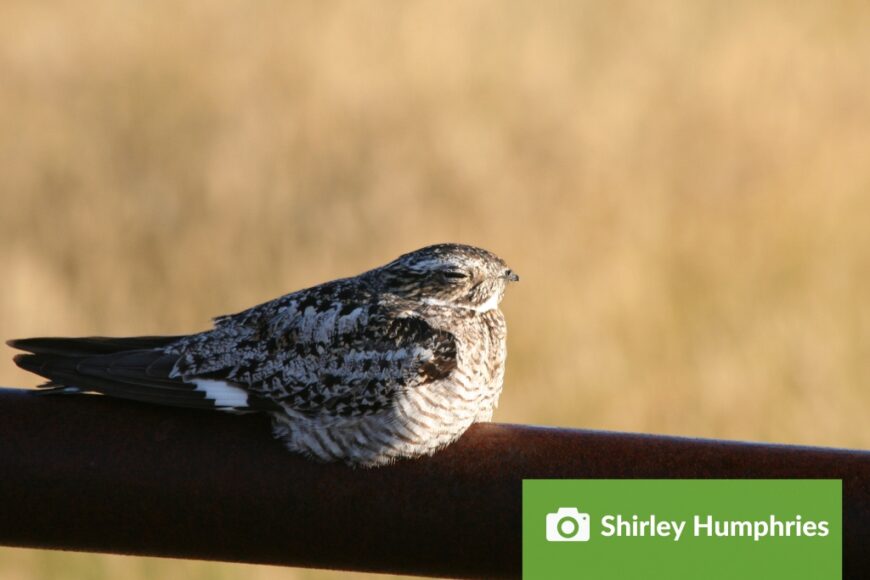Dawson Trail Dispatch, written by Norm Gregoire, December 2023
Page 25 https://issuu.com/dispatch222/docs/dawson_trail_dispatch_december_2023
When I talk to community members about the unique species we live amongst in the tall-grass prairie natural area, there are usually comments on the amount of bird diversity we have. Fourteen of the twenty-eight species at risk in the tall-grass prairie are birds, and they range in many ways, including appearance, habitat preference, and how likely you are to be able to observe them on a day-to-day basis. A bird that you may have seen but were not sure what it was is the common nighthawk.
When folks see the two members of the nightjar family in our area, the eastern whip-poor-will and the common nighthawk, they are surprised to learn that these two birds are two separate species. There are a few ways to correctly identify the two nightjars. Most nightjars are nocturnal, whereas the common nighthawk is crepuscular, meaning it is most active at dawn and dusk. If you have seen a nightjar while there is daylight, what you have thought to be the more well-known nightjar, the eastern whip-poor-will, is most likely a common nighthawk. Other features to look out for are the white bars on the wings, forked tail, and a distinct “peent” call. The eastern whip-poor-will’s call is its unmistakable namesake. The common nighthawk is a medium-sized bird that is well camouflaged due to its grey and brown mottled plumage.
Common nighthawks prefer open areas near mixed woodlands but can adapt to urban habitats. They will hunt around artificial light when it is available. As an insectivore, healthy insect populations are critical. The common nighthawk has even picked up the nickname “mosquito hawk” due to their ability to eat over five hundred mosquitoes and various other insects in a single night.
I cannot say that I love the name common nighthawk. We have already learned that they are crepuscular, so “night” does not really fit. And how common are they? Well, the population seems fairly high throughout Canada, with two hundred seventy thousand breeding adults, according to the Boreal Avian Modelling Project. These numbers can be seen as unreliable due to the common nighthawk’s inactivity during the day, paired with their great camouflage making it hard to conduct surveys on them. What is concerning is that we do know that, like most aerial insectivores (birds that eat insects on the wing), populations are declining, and in the case of the common nighthawk, declining quite steeply at over one percent population decline per year. It would be a real shame for such a unique bird to disappear from the tall-grass prairie natural area. A great way for community members to help the common nighthawk is to take part in Birds Canada’s Canadian Nightjar Survey. By volunteering only a few hours of your time per year, you can provide some very useful data regarding nightjar population trends. For more information on these surveys or to learn more about the common nighthawk, please connect with me at info@sharedlegacymb.ca

